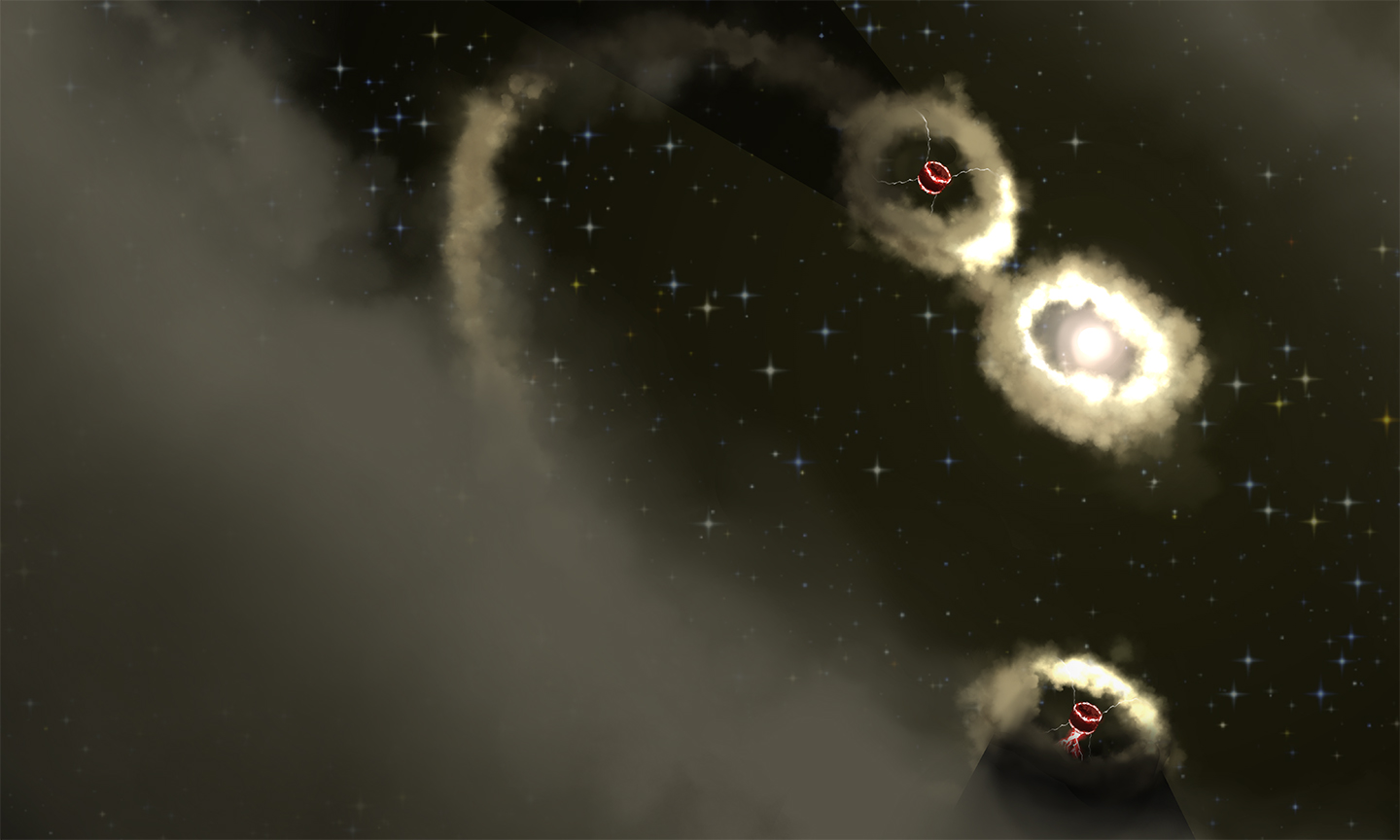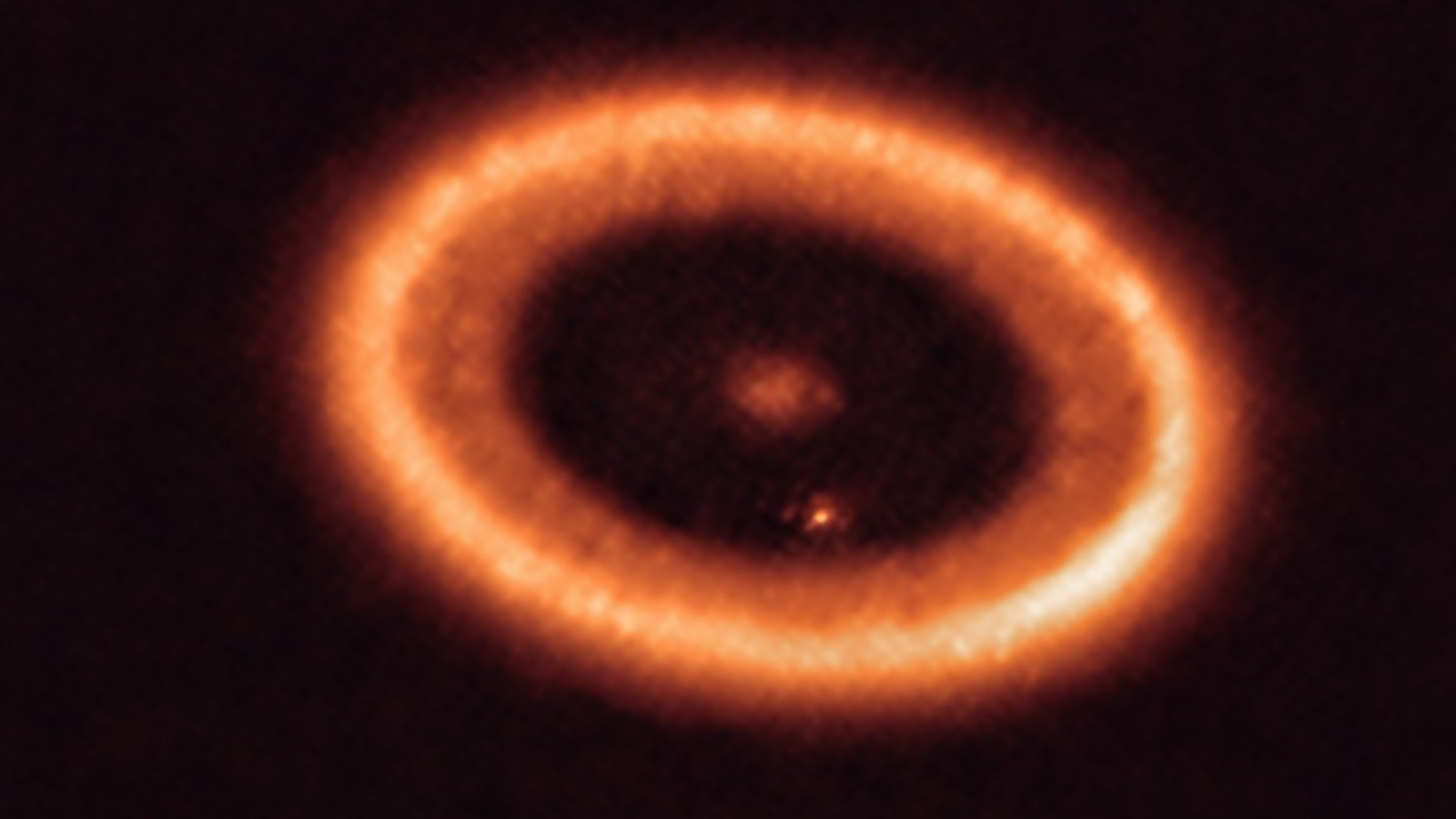Did you know astronomers have captured the first clear images of moons forming around newborn planets? Using cutting-edge telescope technology, scientists have observed two young exoplanets—PDS 70 b and c—surrounded by dusty rings that may be the birthplace of future moons. These stunning snapshots offer an unprecedented look at how planetary systems, including our own solar system, came to be.
In this article, you’ll discover:
✓ How astronomers captured these rare “baby planet” images
✓ Why these protoplanets are dimming and brightening unpredictably
✓ What the dusty rings around them tell us about moon formation
✓ The revolutionary telescope tech making these discoveries possible
Rare Glimpse: Moons Forming Around Infant Exoplanets
Located 370 light-years away in the constellation Centaurus, the young star PDS 70 is only 5 million years old—a cosmic infant compared to our 4.6-billion-year-old Sun. Orbiting within its swirling disk of gas and dust are two growing planets:
-
PDS 70 b – A Jupiter-like gas giant
-
PDS 70 c – Another massive planet with signs of active moon formation
What makes these planets extraordinary? They’re surrounded by dusty rings—potential nurseries for newborn moons.
“We can now see, for the first time, rings of dust around protoplanets made visible by starlight reflecting off them.”
—Jialin Li, University of Arizona

How Were These Baby Planets Discovered?
The breakthrough was made possible by the Magellan Adaptive Optics eXtreme (MagAO-X) system in Chile, which eliminates atmospheric distortion to deliver space telescope-level clarity.
Key Features of MagAO-X:
✓ Corrects atmospheric blurring 2,000 times per second
✓ Can spot a coin from 125 miles away
✓ Captures reflected starlight off protoplanetary dust
This tech allowed astronomers to track brightness changes in PDS 70 b and c over three years:
-
PDS 70 b dimmed to ⅕ of its original brightness (slowing growth)
-
PDS 70 c doubled in brightness (rapidly accumulating gas)
“It’s like one baby planet went on a diet while the other started feasting.”
—Dr. Laird Close, Lead ResearcherWhy Are These Protoplanets So Special?
Out of 5,000+ confirmed exoplanets, PDS 70 b and c are the only known protoplanets observed in such an early stage. Here’s what makes them unique:
1. Active Moon Formation
The dusty rings around PDS 70 c could be forming exomoons, similar to how Jupiter’s moons likely formed.
2. Unstable Growth Patterns
PDS 70 c glows in H-alpha light, indicating it’s still sucking in hydrogen gas.
3. Disk Gaps Reveal Planet Formation
The planets act like cosmic vacuum cleaners, carving gaps in the protoplanetary disk.

What’s Next in Baby Planet Research?
With MagAO-X and next-gen telescopes, astronomers hope to:
-
Find more protoplanetary systems
-
Detect actual exomoons in formation
-
Unlock secrets of our own solar system’s birth
The findings, published in The Astronomical Journal, mark a major leap in understanding planet formation.
FAQs About Protoplanets & Exomoons
Q: What is a protoplanet?
A: A young, still-forming planet gathering mass from surrounding gas and dust.
Q: How do exomoons form?
A: From leftover material in a planet’s orbit—like Earth’s Moon forming from debris after a giant impact.
Q: Why is PDS 70 important?
A: It’s one of the few systems where we can directly observe planet and moon formation.
Q: What’s next for exoplanet research?
A: More discoveries as telescopes like JWST and MagAO-X improve.
Final Thoughts
These “baby pictures” of exoplanets aren’t just scientifically groundbreaking—they’re a glimpse into how our own solar system began.
What do you think? Could these dusty rings become habitable moons someday? Share your thoughts below!
Read our previous article: The Electric State: A Dystopian Wizard of Oz for the Digital Age